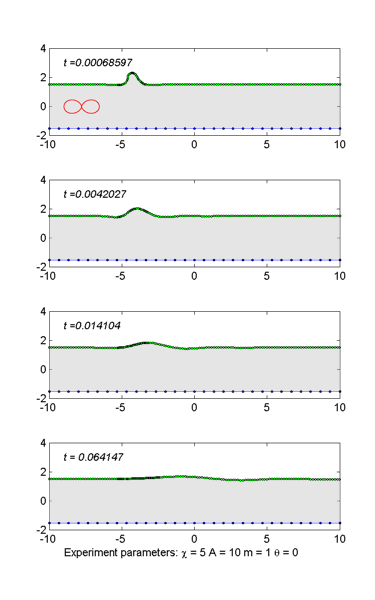 |
ELECTROMIGRATION INDUCED HILLOCK DYNAMICS ON THE INTERCONNECT SURFACE Two Fold Crystal Symmetry, {110} Planes in FCC The interconnect line with zero degree tilt angle and having a Gaussian shape of
edge- Hillock shows two different types evolution behavior depending upon the
applied electron wind intensity. As can be seen in Figure, at very low current
densities χ≤5 , the Hillock due time completely disappears leaving behind almost
perfect flat surface. At low to high current densities, the situation is completely
different. The top of the Hillock starts to over hangs on the leeward side. On the
other hand, the lee side of the Hillock becomes more and more protruding deep into
the bulk region, creating a bottle neck. The finally, the intruding part of the Hillock
breaks down from the bottle neck portion becomes an interior wedge void. This
newly created inner void, the size of which is somehow smaller higher the applied
electron wind intensity, drifts towards the cathode end. The remaining part of the
Hillock has still very long intrusion, which may act as a source for the multiple
inner void generations by breaking-up. |